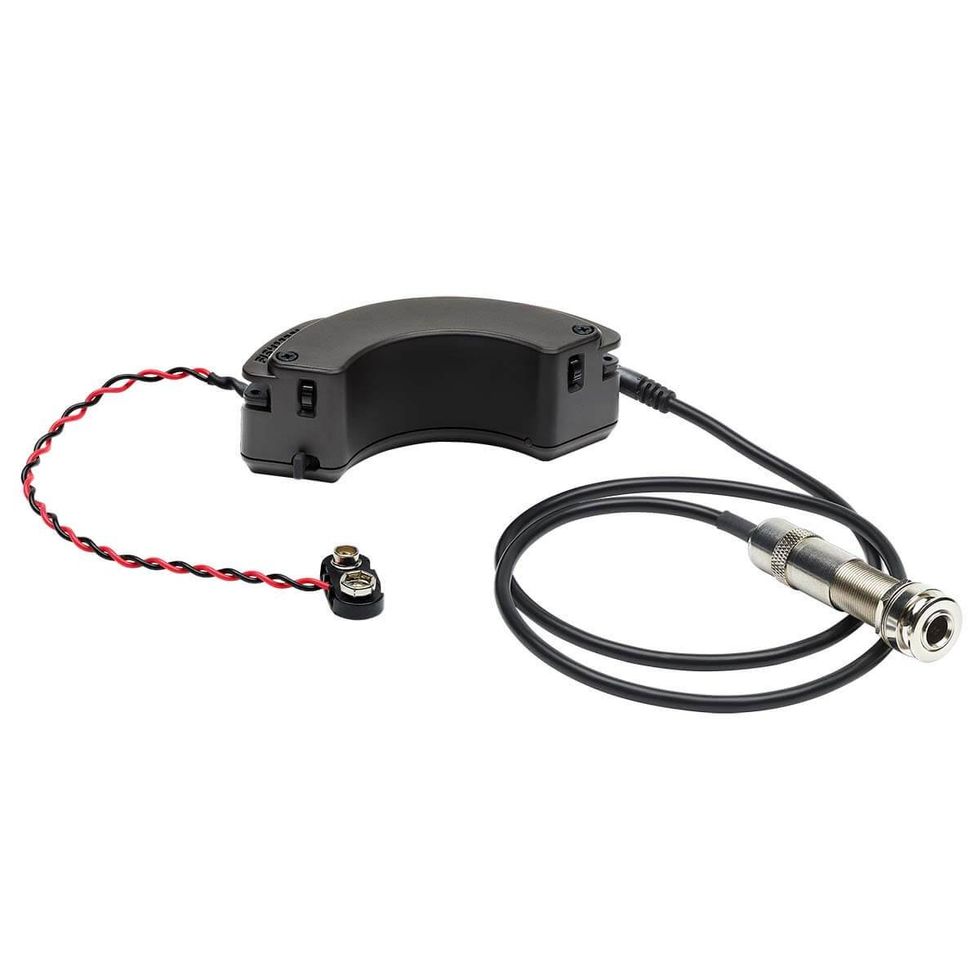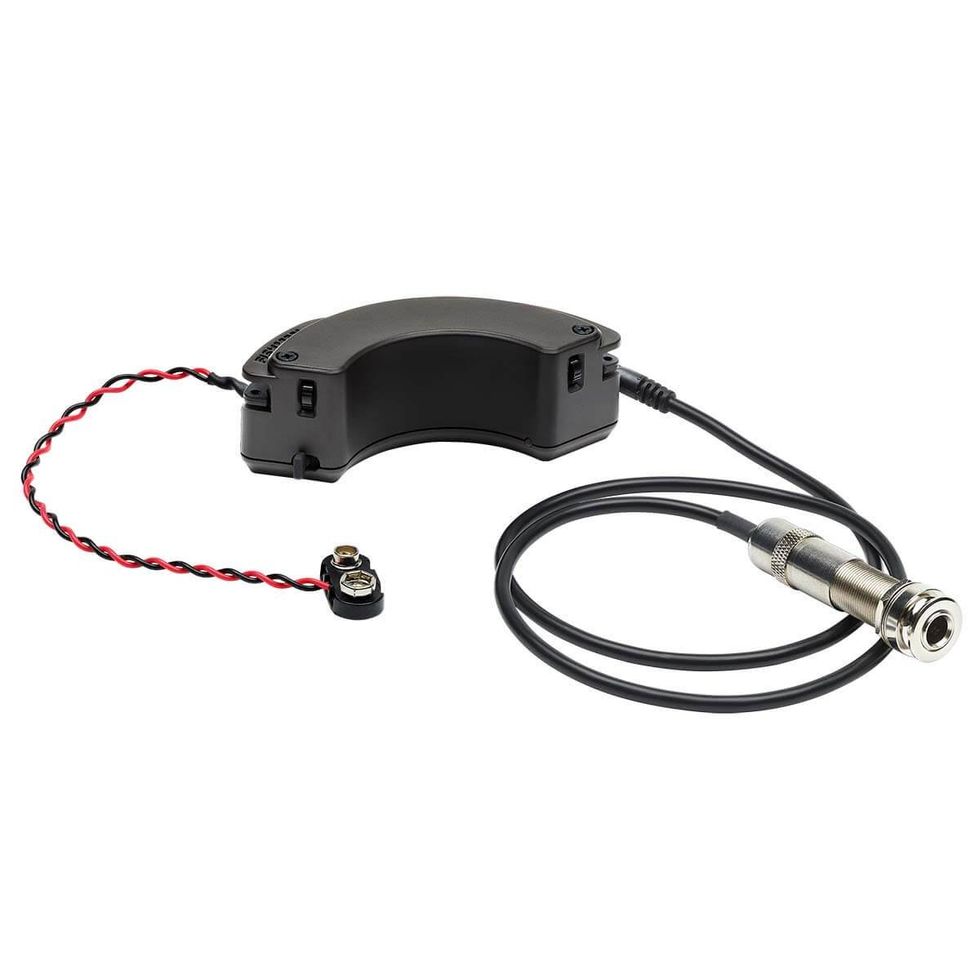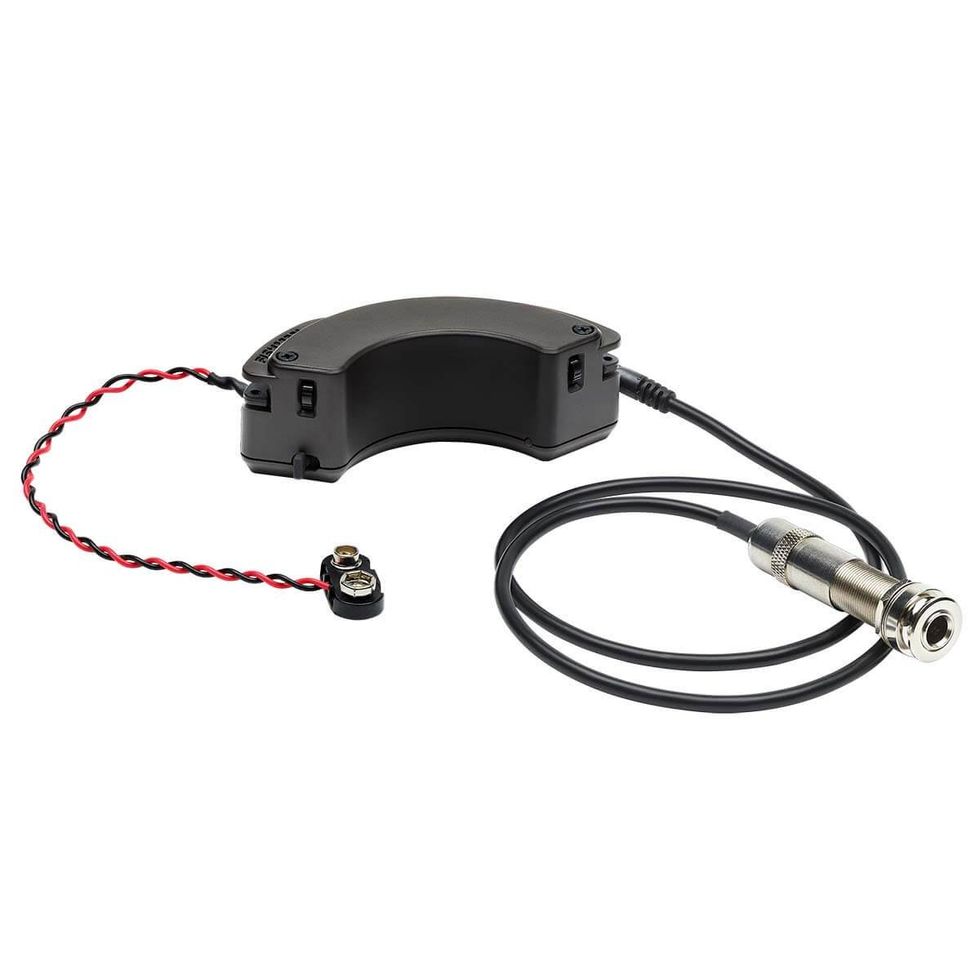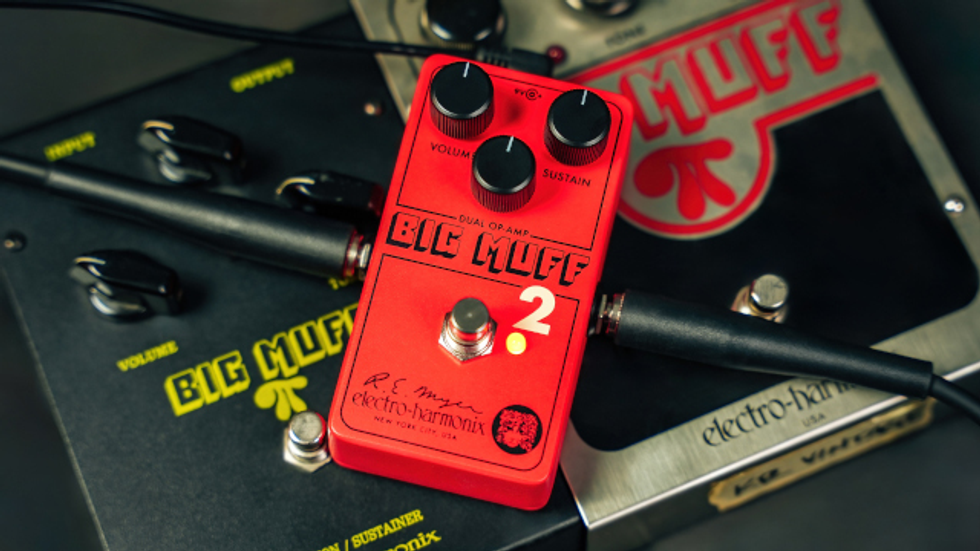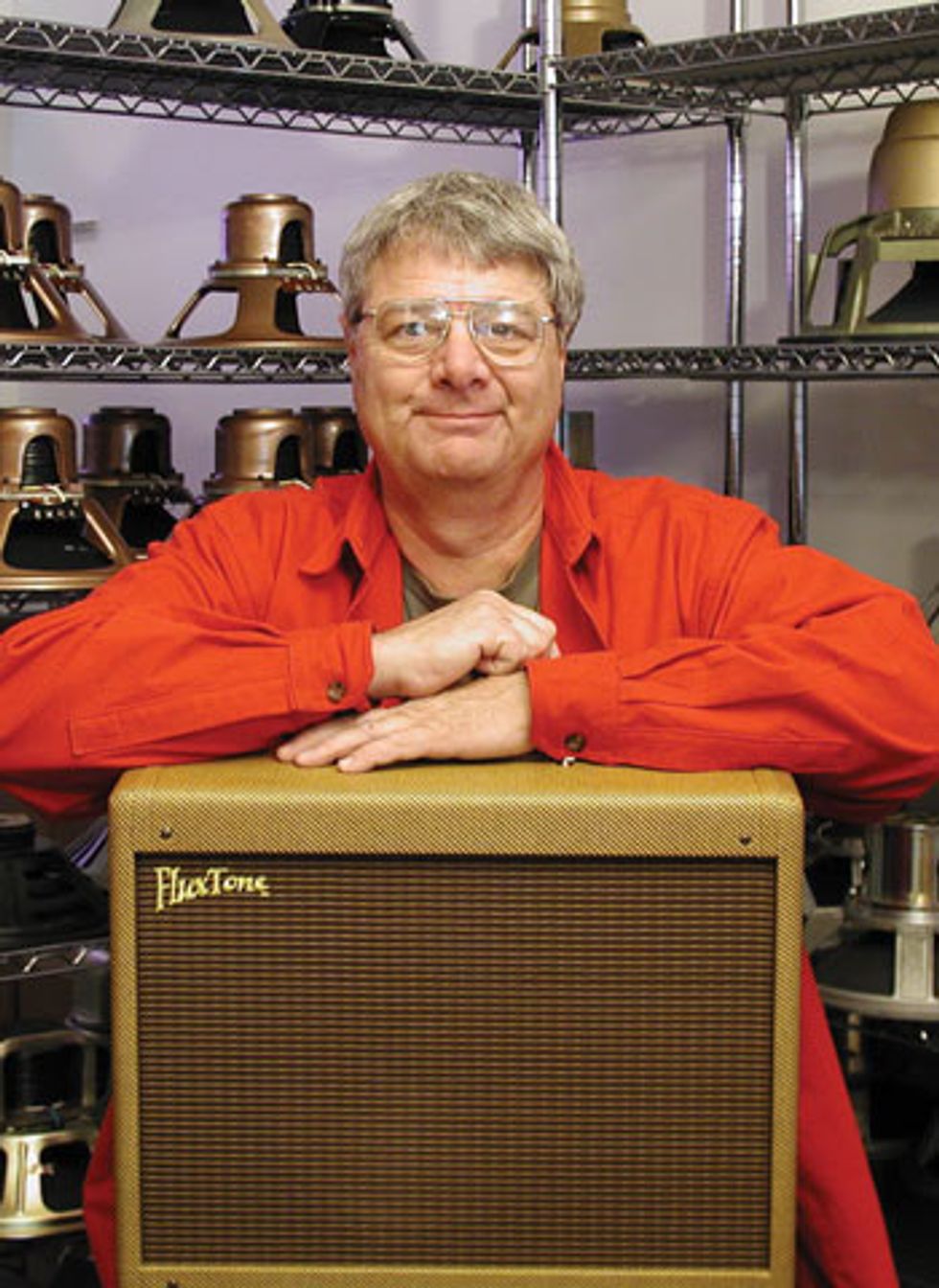 |
|
After plugging in several of the rowdiest 50-Watt heads in residence and hearing the sounds of dimed amps at levels that could barely pass through an office door—we were persuaded. And we could tell from his reaction that Carey recognized the mixture of surprise and gratification that was surely written all over our faces.
The fact that Carey’s method isn’t one of those we already knew about made us want a closer look—while the FluxTone speaker system really is a new idea, the Variable Magnetic Technology at the heart of the system is itself based on a pretty old idea. What appeared to be obsolete a half a century ago turns out only to have been waiting—for a guy like Carey, with a knack and need. I had to pick his brain to find out just how it works.
CB: Can you tell me about your background and how you got started with this?
SC: I had a pretty good introduction to tube electronic theory and circuitry in the sixties. I was in an experimental electronics course offered one year in high school. There were like a hundred and forty of us… it was a disaster… too much data, but I just happened to be at the right place at the right time and took it all in. We went from atomic charges to super heterodyne receivers in nine months. I built my first tube amp in the late sixties and got into hi-fi repair all the way through the seventies.
Then I started building PA systems for the disco era, doing church sound systems, things like that. We built big transistor amps back in the early seventies, when you couldn’t get them… a few years ago, I got into the restaurant business, and we set up a stage. We were doing blues jams and local acts. Sure enough, the age-old problem came up: my girlfriend would say, “I can’t take the orders on the phone, because those guys are too loud. Can you turn that down?” Of course the guitarists always responded, “No, that will ruin my tone.” One by one by one, we went through all the versions of how to turn it down without losing the tone. And one by one by one, the guitarists would say either, “Yeah… that sounds just like my other thing that has a master volume control,” or else they’d say, “It doesn’t work.” We tried building regulated power supplies for the output tubes, driving a small output tube into an inductive load and then re-amplifying it, all the normal master volume controls. There were various kinds of load boxes and such. Being in the hi-fi business, we always had load boxes when testing amps.
All that time in the back of my mind, I knew about what would become the FluxTone system, or VMT (variable magnetic technology), but I always thought it was just such a long way around to get the desired effect. Why would I want to do that? After everything else was undesirable to the guitarists playing in our restaurant, I finally said, “Fine. Okay.” FluxTone manufactures hardware for speaker assemblies in small production runs.
That’s when you decided to go ahead and take the long way around the problem?
Yeah, I got an old field coil speaker and built a variable power supply for it. I did all the preliminary testing. I’d call up a few guitarists who live nearby, who’ve been playing thirty or forty years—when there were tone issues—and tell them to get over here and play the thing, test it out.
Then we showed it to other guitarists. They would hear it, and then the inevitable… what I call the FluxTone smile would creep across their faces. I swear they hear things I don’t, and that’s because they’ve been playing twenty, thirty or forty years and they’re tuned in to the nuances. I’m just an oscilloscope guy, looking for distortion. It’s hard enough to see on equipment, and it’s even harder to hear. But players hear it, and when they heard the VMT system work, they said, “Wow! You did it!” So, we started demonstrating at local shops here in Colorado, and every single time it always ended with, “That really works!” Three years later, I have yet to find anybody who says it doesn’t work. It’s been unanimous.
When did that turn into the decision to start a business?
After demonstrating to maybe fifty or a hundred people, we couldn’t find anyone who would say, “You’re full of it.” Instead, we were hearing, “Why hasn’t somebody else done this? Why did it take fifty years?” We also heard a lot of, “When can I get one?” and of course, all the time I’m doing my tests, my buddies are giving me their tonal input; I set them up with VMT systems and they’re totally addicted. They’re going to their gigs with it. We’ve gotten only positive feedback.
So you didn’t run into any problems?
The only negative was that field coil speakers were abandoned in the fifties. Who makes them? Nobody.
Our patent is not for a field coil speaker. The FluxTone patent is for a certain method of use. The field coil speaker has been around since the twenties. It was abandoned when the technology moved forward. Back in then, we didn’t have Alnico, and there was no way to make a really strong magnetic field with rare earth, so the magnetic field was produced with a field coil. It also doubled as a power-supply-quieting device in those early crude amplifiers… it managed to get the hum out of the power supply, because back then there weren’t these great big capacitors—so the field coil was used to smooth the power supply and to create a magnetic field that was strong enough to be viable. But then after WWII, and Alnico, people figured out how to make stronger magnets. Then field coils went by the wayside. They were just too expensive, they were too hard to make, there’s too much copper involved, there’s too much labor… they’re just a pain the butt.
So, you’re going in the opposite direction of the technological development?
Right. Back then nobody ever wanted to reduce the power to the field coil of a speaker. Why would you do that? They were trying to get all the efficiency they could. Not to mention those old speakers operated at lethal voltages! With FluxTone we redesigned the field coil system, and our speakers operate at a completely safe voltage… you can even stick your finger on the field terminals.
How does it work?
Let’s look at what the VMT preserves. FluxTone has little to no value with a transistor amplifier, because transistor amps don’t have an output transformer. Tubes operate at such high voltages that they can’t be connected directly to the voice coil of a speaker. It’s just such a mismatch of voltage and current, it makes an output transformer necessary... in the case of a tube amplifier, the output transformer, being a magnetic device, is connected directly to the speaker’s voice coil, which is also a magnetic device. As long as they’re connected to each other with nothing between but wires, they form this magnetic circuit, so when you overdrive the output tubes, that circuit starts to ring, and create tones that didn’t come out of your guitar. They’re very much in tune with what you’re playing. It’s kind of like on an organ: push one key, and you get one tone. Pull out another stop, or some other switch, and you get a whole chorus of tones that are all associated with that one key.
If you put something between the output transformer and the voice coil, like a load box, it prevents those tones from being generated, or they’re so quiet you can’t hear them anymore… you’re inevitably going to hinder or kill all those overtones that are generated when you overdrive the amp. What we did with FluxTone was to vary the speaker’s ability to be loud, by adjusting its magnetic strength. We removed the permanent magnet and replaced it with an electromagnet, and now we vary the power going to that electromagnet.
There’s a gap where the voice coil is inside the speaker, and that gap has a magnetic intensity, and it’s measured in so many gauss, or how strong the flux is in that gap. We’re varying that flux strength by having a variable magnet, which doesn’t interfere with the relationship between the voice coil and the output transformer, so whatever overtones are generated are still there. It’s just like reducing the size of the magnet on the speaker, thereby reducing its ability to be loud.
The magnets in your speakers are copper. What do you say to players who are worried that if they’re not getting a speaker with an Alnico or ceramic magnet they’re not going to get that precise tone they know and love?
Modern speakers mostly use ceramic magnetic structures, which are much easier to manufacture than Alnico. Ceramic magnets came along about the same time that amplifiers started changing to transistors to get more power at less cost. Now remember that tubes and transistors already sound different, and because the voice coils were asked to handle more power they needed to have more room in the gap to fit more turns on the voice coil. That made the gap bigger, which… every time you double the gap width, you need four times the amount of magnetic strength to maintain the same magnetism across that gap. You couldn’t get that kind of magnetism out of Alnico magnets without making them prohibitively expensive. Ceramic magnets were much more powerful per pound, so they lent themselves to the wider gap.
While acknowledging that players can hear a difference between ceramic speakers and Alnico speakers, we have taken the time to install and test the exact same cone assemblies in ceramic, Alnico, and field coil frames. Once we removed the variables, in my observation, both in the lab and on stage, the differences in tonal characteristics are not so much from the origin of the magnetism, but rather because of the weight of the moving parts, what they’re made out of, and the distance they move. The old Alnico speakers had a much lower power rating, therefore the elements that moved were lighter, and did not move as far, so they could jump to those delicate frequencies more quickly.
You’re offering different types of speakers. How many types of voices are there, and are these the standard types of speakers used in guitar amps?
We have about six voices at this point. We have a custom made voice from Eminence that sounds very, very close to the original Jensen P12Q or P12R: the old Alnico speakers that came with the low-power Fender amplifiers from the fifties—the ones that most people drool over. We install that voice in one of our baskets, so when you use that particular FluxTone driver, it’s going to sound like the old Jensen sound. We also get cones that are manufactured in Italy by the company that bought the Jensen name, and those cones typically come in amps like a new Fender Twin Reverb. We put those in for another voice, if you like that one. And then we have four different cones we get directly from Celestion.
Ninety-nine percent of that sound actually comes from the parts that move, rather than the basket or the paint, or how the magnetism is generated. It’s actually coming from the weight of the voice coil, the size of the wire, the size of the voice coil winding, the gap width and height, all that stuff. The part that’s moving, the cone, the dustcap, the voice coil, the spider, those things are all glued together, and they move as one piece. The mass of those various elements, and the lengths of the paper pulp fibers that are in the cone, plus other minor minutiae (glue, humidity, etc.) all dictate exactly what it’s going to sound like.
As long as you take that whole assembly together—the cone, the spider, the voice coil, all of the moving parts—if you take that whole thing out of a Celestion gold speaker, say, and put it into another speaker frame, it’s going to sound the same because all the moving parts are the same.
We put the cone assemblies directly into our hardware. So, if you buy a Celestion Blue from us, you’re getting everything a Celestion blue is, as far as its tonal abilities and power handling, only you get it with FluxTone’s VMT. Because we’re building speakers more or less one at a time, we have very small production runs, maybe ten or twenty in one run, so we can hold our tolerances tight. The overall efficiency of our drivers is usually the same or higher than the equivalent driver in the industry.
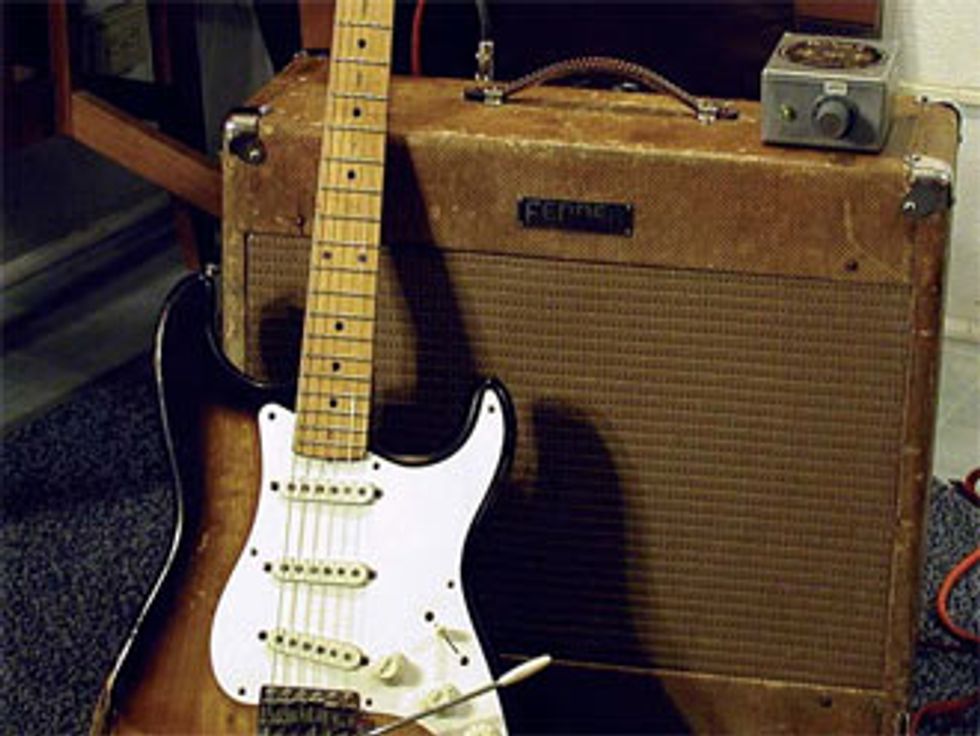 An example of the FluxTone retrofit on a ‘54 Fender Pro. |
Absolutely. People come to us with old classics, and they don’t want them permanently altered. We can remove your original speaker, put it in a box for you to put on your shelf— because quite often they’re worth as much as the amp. Then we’ll install a FluxTone speaker and an external power supply to run it. It just comes down to a little box with a knob on it. You have your old amp playing through your favorite voice in a FluxTone speaker, so you don’t need an extra cabinet. People send their amps to us, and we’ll do the retrofit and return them. Or you can buy just a speaker and a power supply and retrofit your own. There’s a wide variety of options.
How does it work with a configuration like 2x12 or 4x12?
You can do it any way you want. If you want it elaborate, like some recording studios do, it will have two or four voices in a single box, and it’ll have one control for each voice, so you can actually mix and match voices. That way you can come up with a very unique sound that just doesn’t exist anywhere else, or any one of the voices that you select. Or you can hook two or four speakers up to a single power supply.
What are your plans for the future of FluxTone?
We are looking at various OEM situations, getting some licensing agreements where we can supply speaker to some companies, and we’re looking at partnering with speaker manufacturers, and seeing about getting these things a little more mass-produced.
For more information:
fluxtone-speakers.com
You can also demo the FluxTone speaker system at the following dealers:
larkstreetmusic.com / New Jersey
guitar-emporium.com / Louisville
cornermusic.com / Nashville
actionguitar.com / Wash DC








![Rig Rundown: Russian Circles’ Mike Sullivan [2025]](https://www.premierguitar.com/media-library/youtube.jpg?id=62303631&width=1245&height=700&quality=70&coordinates=0%2C0%2C0%2C0)





